Here is what worked for me:
If the stlink is actually broken off, the nucleo should be powered by the stlink, the yellow wire going from the the upper pin of JP1 on the stlink to pin 16 of the nucleo supplies the 3.3V (the other yellow wire going from nucleo pin 4 to swd/cn4 pin 1 is used by the stlink to measure the voltage).
As with measuring the voltage: also make sure that R9 on the stlink exists, on mine it was empty, I had to solder a 4K7 resistor, before that, the voltage was read as 0V by the stlink and open OCD was issuing a warning message "target voltage may be too low for reliable debugging”
The jumper on the nucleo JP5 should be removed as to deconnect from the output of the onboard regulator.
If you are programming another nucleo where the stlink is NOT broken off, on the other nucleo stlink the 0 ohm resistor on SB12 should be removed as to deconnect the reset line going from the NOT broken off stlink to the nucleo, otherwise the connected stlink, when not powered will hold the reset line.
Optional connections (35, 37) to RX and TX require connecting the bridges SB62 and SB63 under the nucleo board, this allows to use the virtual comm port of the stlink



